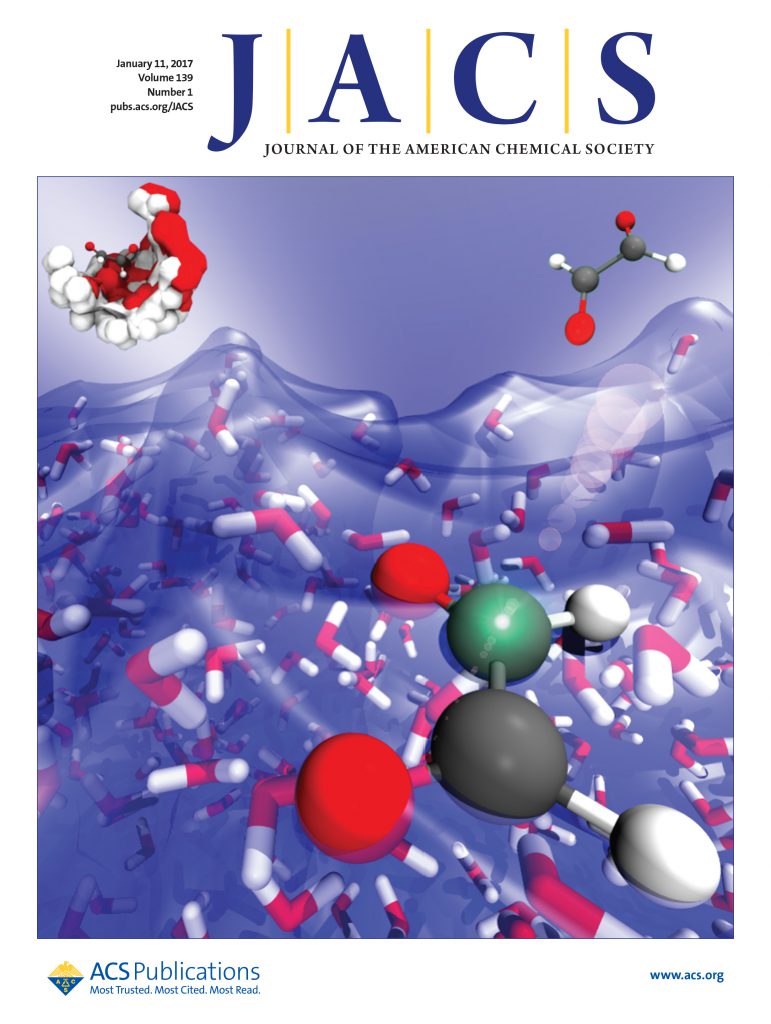Cross-Coupling of NHC/CAAC-Based Carbodicarbene: Synthesis of Electron-Deficient Diradicaloids
IF 14.4
1区 化学
Q1 CHEMISTRY, MULTIDISCIPLINARY
引用次数: 0
Abstract
Herein, we report nickel(0)-catalyzed cross-coupling reactions of NHC/CAAC-based carbodicarbene (NHC = N-heterocyclic carbene and CAAC = cyclic(alkyl)(amino)carbene) with different aryl chlorides, bromides, and iodides. The resulting aryl-substituted cationic carbodicarbene derivatives are prone to one-electron oxidation yielding radical-dications, which, depending on the aryl motif employed, follow different modes of radical–radical dimerization and constitute an entry point to carbon/nitrogen- and nitrogen/nitrogen-centered diradicaloids. Subsequently, this coupling strategy was strategically applied to the synthesis of p-phenylene- and p,p′-biphenylene-bridged carbon/carbon-centered electron-deficient diradicaloids. The employed π-conjugated spacer plays a crucial role in determining the triplet population at room temperature by modulation of the singlet–triplet gap: EPR inactive for p-phenylene vs EPR active for p,p′-biphenylene. Nearly two decades after the disclosure of carbodicarbenes as donor-stabilized atomic carbon equivalents by Tonner and Frenking in 2007, we demonstrate their cross-couplings with a series of aryl halides/dihalides and, based on this, developed a modular methodology for the systematic synthesis of various electron-deficient diradicaloids.

基于 NHC/CAAC 的碳二炔交叉偶联:合成缺电子的二维类化合物
在此,我们报告了镍(0)催化的 NHC/CAAC 基碳化二碳(NHC = N-杂环碳烯,CAAC = 环(烷基)(氨基)碳烯)与不同芳基氯化物、溴化物和碘化物的交叉偶联反应。由此产生的芳基取代阳离子碳二炔衍生物容易发生单电子氧化反应,产生自由基二阳离子,根据所使用的芳基基团不同,自由基-自由基二聚化的模式也不同,并构成了以碳/氮和氮/氮为中心的二维类化合物的切入点。随后,这种偶联策略被战略性地应用于合成对亚苯基和 p,p′-联苯桥接的碳/碳中心缺电子二维化合物。所采用的π-共轭间隔物通过调节单线-三线间隙在室温下决定三线群方面起着至关重要的作用:对联苯的 EPR 不活跃与对,p′-联苯的 EPR 活跃的对比。在 Tonner 和 Frenking 于 2007 年揭示碳二烯类作为供体稳定的原子碳等价物近二十年后,我们证明了它们与一系列芳基卤化物/二卤化物的交叉耦合,并在此基础上开发了系统合成各种缺电子二环化合物的模块化方法。
本文章由计算机程序翻译,如有差异,请以英文原文为准。
求助全文
约1分钟内获得全文
求助全文
来源期刊
CiteScore
24.40
自引率
6.00%
发文量
2398
审稿时长
1.6 months
期刊介绍:
The flagship journal of the American Chemical Society, known as the Journal of the American Chemical Society (JACS), has been a prestigious publication since its establishment in 1879. It holds a preeminent position in the field of chemistry and related interdisciplinary sciences. JACS is committed to disseminating cutting-edge research papers, covering a wide range of topics, and encompasses approximately 19,000 pages of Articles, Communications, and Perspectives annually. With a weekly publication frequency, JACS plays a vital role in advancing the field of chemistry by providing essential research.

 求助内容:
求助内容: 应助结果提醒方式:
应助结果提醒方式:


